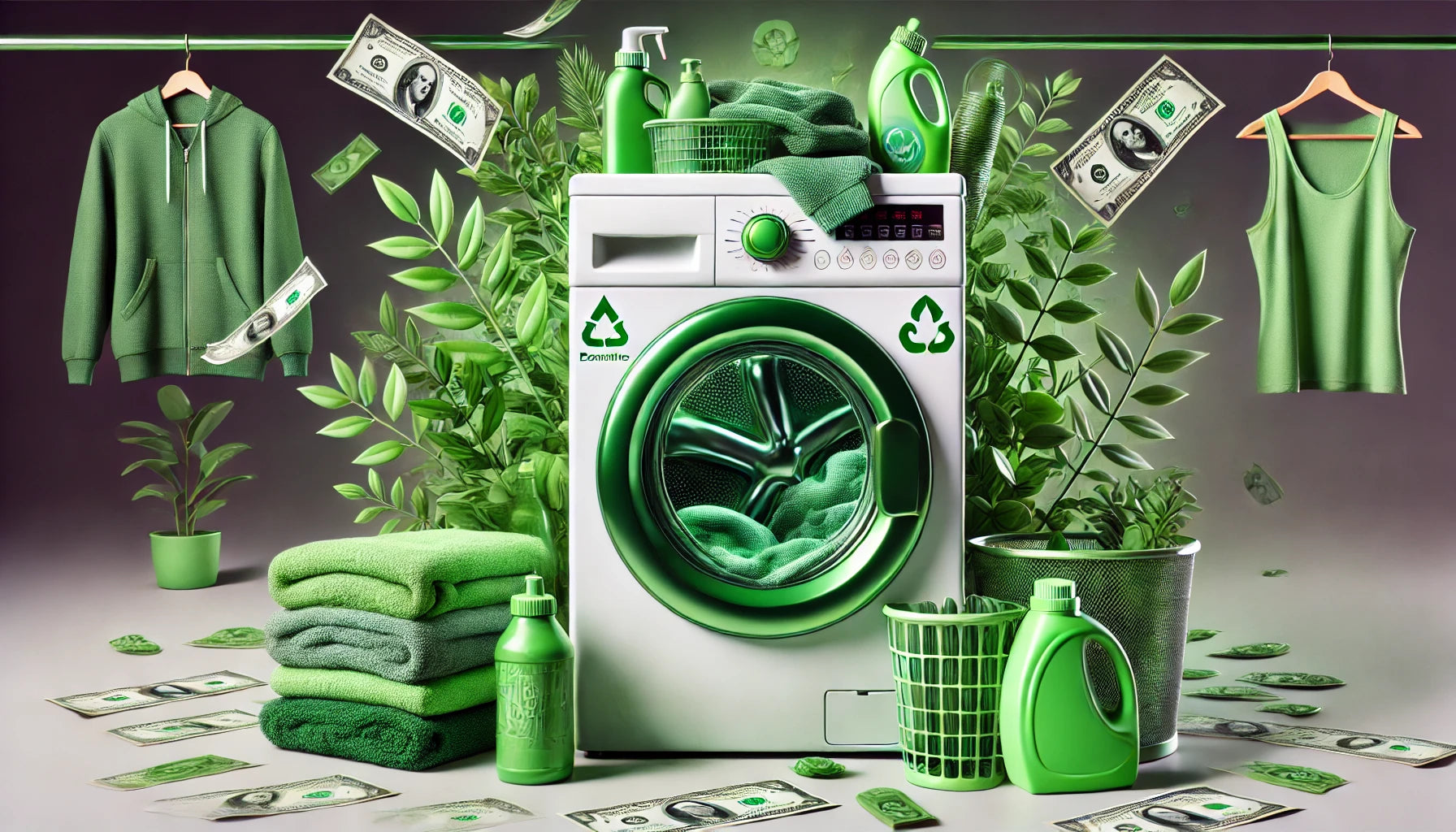
With the rise of sustainability becoming a growing concern for consumers, many brands have jumped on the eco-friendly bandwagon. However, not all are making the impactful changes they claim. This marketing tactic, called greenwashing, is common in fast fashion, where brands portray themselves as environmentally conscious while continuing harmful practices. Let's break down what greenwashing is, how fast fashion brands use it and how to avoid falling for it!
What is Greenwashing?
Greenwashing happens when a company makes exaggerated or misleading claims about its environmental efforts. Rather than making substantial changes, they present small, often insignificant steps as proof of their eco-consciousness. For example, a brand may use terms like "made from sustainable materials" without clarifying what percentage of the product is truly sustainable or providing transparency on how the item was produced. This tactic makes consumers feel like they're making environmentally friendly choices, but in reality, the impact is minimal.
How Fast Fashion Uses Greenwashing
Fast fashion brands are particularly notorious for greenwashing. These companies produce clothing in large volumes, at low costs, and with quick turnaround times—all at the expense of environmental sustainability. However, with consumers becoming more aware of the environmental damage caused by the fashion industry, fast fashion brands have started incorporating "eco-friendly" collections or products to appear more responsible.
A well-known example are H&M’s sustainable collection, which the company heavily promotes as a eco-friendly line of clothing. While it may feature some recycled or organic materials, this collection represents only a tiny fraction of H&M's overall production. The rest of their clothing is produced using conventional, environmentally harmful methods, including excessive use of synthetic materials and water. H&M’s focus on this small collection allows the company to appear eco-friendly, while the bulk of its operations remain unsustainable—a classic case of greenwashing.
How to Avoid Greenwashing
It’s easy to get caught up in greenwashing, especially when brands use clever marketing. However, there are ways to spot and avoid it:
1. Look for Specifics: Be cautious of broad claims like “eco-friendly” or “sustainable” without any backing details. Instead, look for brands that provide specific information on how their products are made, the materials used, and the impact of their production processes. And check the label inside!
2. Check for Certifications: Independent certifications can help you differentiate between genuine sustainable brands and those just paying lip service. Some trusted certifications to look out for include:
- OEKO-TEX: This certification ensures that textiles are free from harmful chemicals and that production processes are environmentally responsible.
- GOTS (Global Organic Textile Standard): One of the most stringent certifications, GOTS ensures that products are made with organic fibers and that the entire production chain, from farming to manufacturing, follows strict environmental and social standards.
- B Corp: B Corp certification goes beyond environmental impact and evaluates a company’s overall social responsibility. To be B Corp certified, companies must meet high standards in governance, labor practices, and transparency, making it a solid indicator of ethical business operations.
3. Don’t Fall for Mini "Sustainable" Collections: Many fast fashion brands will create small "conscious" collections to distract from their larger unsustainable operations. If a company focuses too much on marketing one small eco-friendly line while continuing harmful practices elsewhere, this could be a sign of greenwashing.
4. Consider the Product Lifecycle: Fast fashion is designed to be disposable, with items that don’t last long and end up in landfills. True sustainable fashion brands focus on quality, durability, and timeless designs that are meant to last. When choosing what to buy, opt for pieces that are built to last and reduce waste.
Good Chic’s Commitment to True Sustainability
At Good Chic, we are passionate about promoting sustainable fashion that goes beyond the greenwashing tactics used by many brands. As a UAE-based eCommerce store, we work with European brands that prioritize genuine environmental responsibility, focusing on high-quality materials, ethical labor practices, and transparent supply chains.
We don’t believe in fast fashion’s “more is better” approach. Instead, we take the time to carefully curate pieces that are not only stylish but built to last. From organic cotton shirts to recycled materials, our collection includes timeless products certified by organizations like OEKO-TEX, GOTS, and B Corp. By offering durable, well-made clothing, we help consumers move away from the fast fashion cycle of constant consumption and toward more thoughtful, lasting purchases.
We understand that there’s no such thing as a perfect sustainable brand, but we’re committed to doing better and supporting brands that share our values. We believe in quality over quantity, offering a curated selection of products that help you make choices you can feel good about.
Quality Over Quantity
In the world of fashion, less is more—especially when it comes to sustainability. There’s no such thing as a perfectly sustainable brand, but at Good Chic, we are committed to offering high-quality, timeless pieces that encourage conscious consumption. Instead of filling your wardrobe with cheap, trendy items that won’t last, invest in clothing that is built to last and reduces waste.
We are proud to work with brands that walk the walk when it comes to sustainability, and we invite you to join us on this journey. Let’s redefine fashion by focusing on quality, transparency, and thoughtful buying choices. By supporting sustainable brands, we can reduce our impact on the planet—one purchase at a time.
